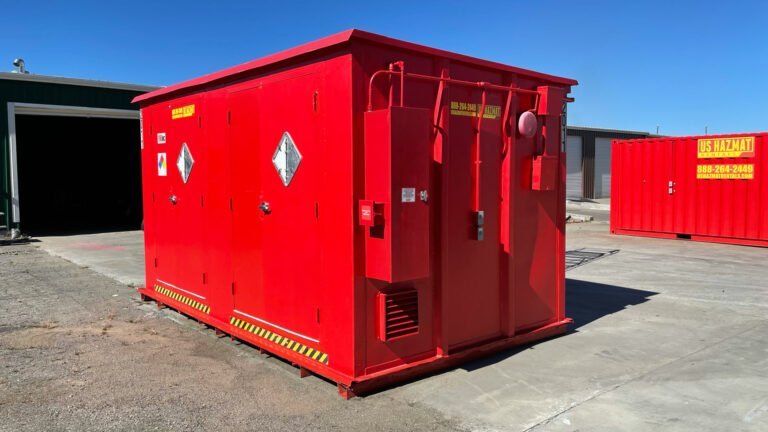For the first time in nearly three decades, OSHA is releasing new guidance for the interpretation of process safety management pertaining to dangerous chemicals. While primarily intended for uniformed enforcement guidance of existing regulations, the 103-page document gives companies handling dangerous materials new insight on how federal agents interpret storage guidelines. The new directive requires closer scrutiny of chemical plants, refineries and any other industry handling dangerous quantities of hazardous materials. To be clear, the new OSHA guidance is not an instruction, standard or regulation. It’s more of a clearinghouse for inspectors deciphering nuance in potential violations. In an easy-to-read Q and A format, the update answers some of the most common questions from field agents attempting to interpret OSHA’s dense regulations
New OSHA Guidance Allows Better Understanding of Hazmat Violations
Have you ever wondered what goes through the head of an OSHA inspector when they visit your worksite? By better understanding what constitutes a clear-cut violation of chemical storage violation, you can protect and streamline existing workflow operations. As you can discern from the volumes of chemical storage regulations available in its online library, OSHA compiles thousands of workplace safety regulations to keep employees safe. While the violent release of dangerous chemicals is rare, the resulting potential catastrophic loss of life has prompted the agency to give new insight to field inspectors on what to look for in the line of duty. In its entirety, the new OSHA guidance individually addresses compliance triggers, chemical monitoring, storage barriers and interconnectivity of operations.
Keeping Compliance in Check To Better Protect Workers

Without question, OSHA requires perpetual vigilance and compliance of all employers managing dangerous chemicals. Like or not, we need OSHA’s stern guidance to keep us safe while on the job. Such keen insight of discrepancy is of upmost importance. OSHA’s new safety guidance is no coincidence. Over the years, the agency’s diligent inspectors have undoubtedly come across potential violations necessitating greater clarity from the rulebook. Not everything in life is black and white. What constitutes compliance today could meander into a gray area of questionable chemical storage processes tomorrow. At the end of the day, OSHA values accountability and safety over company profit. It also strives to hold its inspectors to a higher level of compliance and knowledge of dangerous chemicals.
Answering the Tough Questions
Below is a sample of the more prominent questions submitted by field inspectors over the past 29 years. Safety engineers and company foreman should pay close attention to the agency’s answers to better understand common safety violations at facilities nationwide. Knowledge and preparedness will always be your most effective weapon at keeping inspectors at bay should your operations fall under closer scrutiny.
- Does an employer need to conduct another compliance audit after completion of their initial compliance audit?
- When determining whether a process contains a threshold quality for those highly hazardous chemicals listed in Appendix A that do not have a listed concentration, do the quantities of the HHC that are part of the solution or mixture count toward the TQ?
- Must employers register their PSM-covered facilities with OSHA? Is the quantity of a specific HHC aggregated over a period used to determine if the amount exceeds the TQ in a PSM-covered process?
- Does the PSM standard apply to sulfuric acid?
- Does the PSM standard apply to hydrogen and sodium hydroxide?
Questions Pertaining to Flammable Liquids and Gasses

- Are the quantities of flammable liquids (Flash Point < 100°F) and flammable gasses (Category 1) combined to determine if a TQ has been exceeded?
- For processes involving flammable gas mixtures, are the non-flammable components in the mixture included when determining the TQ?
- Does the PSM standard apply to the distilling industry in North American Industry Classification System?
- Are biodiesel plants PSM covered?
- Do the PSM regulations pertain to retail stores?
Do Hydrocarbon Fuels Fall Under the Purview of the PSM?
- Are the methane collection systems described above PSM covered?
- 350-gallon totes containing flammable liquids are used at a facility to refuel
- vehicles. Are they covered by the PSM standard?
- Does the PSM standard apply to gasoline used as a fuel to test and run inboard and outboard engines?
- Are Oil or Gas Well Drilling or Servicing Operations?
- Does the PSM standard apply to pyrotechnics (fireworks) and explosives? Does a TQ for this category exist?
Steel Fire-Rated Chemical Lockers for Every Storage Dilemma

We might not work with OSHA, or any other federal regulating industry, but we have a wealth of knowledge about compliant chemical storage. We have only skimmed the surface of the extensive questions compiled by field agents over the years. Although wide-sweeping in scope, the new OSHA guidance only begins to explore the complexity of chemical storage violations. Whenever in doubt, trust the experts at U.S. Hazmat Rentals. We provide astute guidance and recommendations for every chemical storage dilemma we encounter. We respond to these pressing questions by presenting a wide range of OSHA compliant chemical storage lockers to satisfy every letter of the law. Contact us today for a free consultation!






